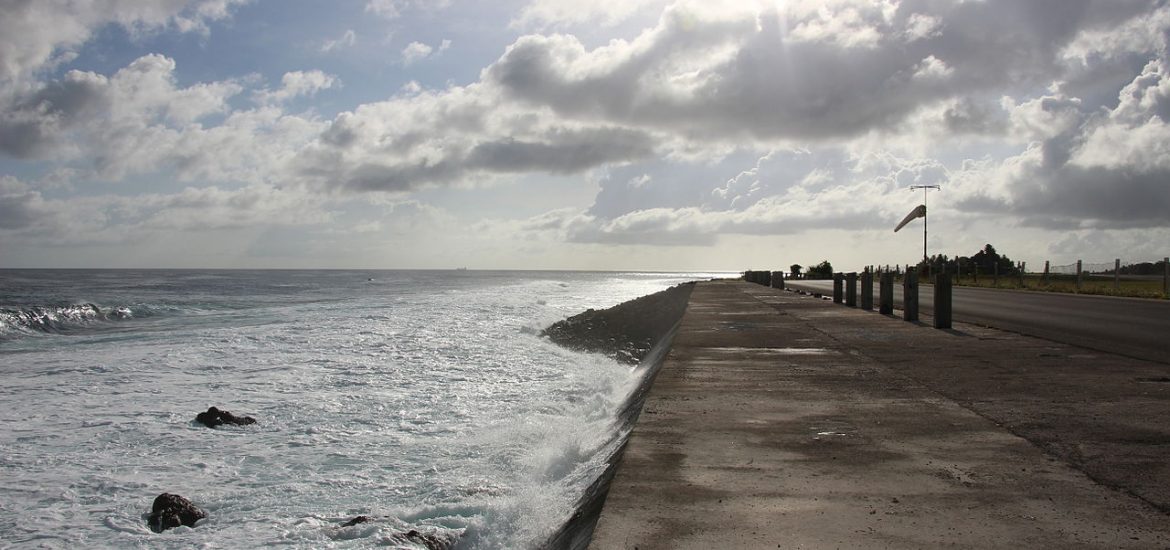
New report on Sea Level Rise and Climate Change challenges the alarming predictions of 21st century sea level rise.
“Antarctica meltdown could double sea level rise”. “The planet could become ungovernable”. Such headlines reflect the growing alarm over sea level rise.
How worried should energy companies be about sea level rise? There are 287 energy facilities in the U.S. at coastal locations that are within 4 feet of typical high-tide level. More than half of these facilities are located in Louisiana, Florida, California, New York, Texas, and New Jersey. Further, numerous energy companies have been the target of lawsuits over concerns about climate impacts of fossil fuel emissions, notably sea level rise.
The alarm over sea level rise is not so much about the 7 inches or so that global sea level has risen since 1900. The average yearly rate of global sea level rise is 3 millimeters – the height of a stack of two pennies. Rather, the alarm is driven by predictions of sea level rise from human-caused global warming. There are concerns that Antarctic ice sheets could collapse into the ocean, increasing sea level in the 21st century by up to 5 feet or more.
Are these extreme scenarios of 21st century sea levels plausible? Or even possible? To put these alarming predictions into the context of scientific evidence, I have recently written an independent assessment report on Sea Level and Climate Change. The Report draws the following conclusions.
Is recent sea level rise unusual?
At least in some regions, the sea level was higher around 5000 to 7000 years ago. After several centuries of sea level decline following the Medieval Warm Period (about a thousand years ago), global sea levels began to rise in the mid 19th century. Rates of global sea level rise between 1920 and 1950 were comparable to recent rates. Recent sea level rise is therefore within the range of natural sea level variability over the past several thousand years.
Is recent sea level rise caused by human-caused global warming?
The slow buildup of fossil fuel emissions before 1950 did not contribute significantly to 19th and early 20th century sea level rise. There is not yet any convincing evidence of a human fingerprint on global sea level rise, because of the large changes driven by natural variability. An increase in the rate of global sea level rise since 1995 is being caused by ice loss from Greenland. Greenlandic ice loss was larger during the 1930s, which was also associated with the warm phase of the Atlantic Ocean circulation pattern.
How much is local sea level rise being influenced by the global sea level rise?
The main causes of local sea level rise in many locations are local sinking of the land and ocean circulation patterns. Landfilling in coastal wetland areas and the withdrawal of groundwater have caused many of the worst local sea level rise problems.
How much will sea level rise in the 21st century?
Local sea levels in many regions will continue to rise in the 21st century – independent of global climate change. The 2013 Report from the United Nations Intergovernmental Panel on Climate Change predicted a likely range of sea level rise by the end of the 21st century to be from 10 inches to almost 3 feet, depending on the scenario for greenhouse gas emissions. The highest of these emissions scenarios,Representative Concentration Pathway (RCP)8.5, more than doubles atmospheric CO2 concentrations from current values by the end of the 21st century, and is based on a number of extremely unlikely assumptions.
Since the 2013 Report, a number of worst-case scenarios for global sea level rise have been published by scientists. Estimates of the maximum possible global sea level rise by the end of the 21st century range from 5 to 10 feet, and even higher. These extreme values of sea level rise, driven by the extremely unlikely RCP8.5 emissions scenario, are regarded as highly unlikely or even impossible. Nevertheless, these extreme, barely possible values of sea level rise are driving policies and local adaptation plans.
These predictions of sea level rise depend on climate models to predict the correct amount of warming. However, there are reasons to think that the models are predicting too much warming:
- Observed warming for the past two decades is smaller than the average warming predicted by climate models.
- When compared with observations over the past 150 years, climate models produce too much warming in response to increasing atmospheric carbon dioxide.
- Climate model predictions only consider human-caused warming, and neglect changes in natural climate processes: variations in the sun’s output, volcanic eruptions and long-term changes to ocean circulations. These natural processes are expected to have a cooling effect in the 21st century.
Predictions of a 21st century sea level rise higher than 2 feet are increasingly weakly justified, even if the predicted amount of warming is correct. Predictions higher than 5 feet require a cascade of extremely unlikely-to-impossible events using overly simplistic models of poorly understood processes.
An additional sea level rise of 1 to 2 feet over a century can be a relatively minor problem if it is managed appropriately. A prudent course of action is to expect 1-2 feet of additional sea level rise by 2100. Where possible, then, plan new power facilities away from the coast and have a contingent strategy for adding additional flood defenses if needed.
The views and opinions expressed in this article are those of the author and do not necessarily reflect those of Energy Reporters.






They will be loyal to you seeking treat them fairly
by means of respect. Doing SEO on your text enable drive visitors to those texts and to
wherever subjected to testing linked as well.